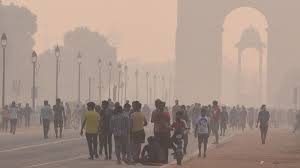Air pollution poses a threat in North India, ‘Warning’ given in the study of University of Chicago

The level of air pollution in India has expanded geographically over time and in Maharashtra and Madhya Pradesh it has increased to such an extent that the average person’s life expectancy is falling by an additional 2.5 to 2.9 years. Is. A new report has warned about the consequences of pollution. The University of Chicago’s Air Quality Life Index (AQLI) report states that India is the most polluted country in the world, with more than 48 million people or about 40 percent of the country’s population living in the Gangetic plains in the north. where pollution levels routinely exceed levels found elsewhere in the world. A study by the University’s ‘Energy Policy Institute’ shows that if a person breathes clean air, how long does it take? can survive. North India residents are on track to lose more than nine years of life expectancy if 2019 pollution levels remain the same, the report said as the region faces some of the most extreme levels of air pollution in the world .
The report said that India’s average ‘particulate matter concentration’ (presence of polluting fine particulates in the air) in 2019 was 70.3 micrograms per cubic meter, the highest in the world and 10 micrograms per cubic meter of the World Health Organization (WHO). According to the report, India’s high levels of air pollution have increased geographically at an alarming rate over time.
“Unlike a few decades ago, fine particulate pollution is no longer a feature of the Gangetic plains of India alone,” the report states. Pollution has increased significantly in the states of Maharashtra and Madhya Pradesh. For example, the average person’s life expectancy in those states has now dropped by an additional 2.5 to 2.9 years relative to the beginning of 2000. For Bangladesh, India, Nepal and Pakistan, the AQLI data shows that if the WHO’s According to the guidelines, if pollution is reduced, then the average person will live 5.6 years longer. The populations of Bangladesh, India, Nepal and Pakistan account for nearly a quarter of the global population and are consistently ranked among the top five most polluted countries in the world. The report said that crop residue burning, brick kilns and other industrial activities have also contributed to the increase in polluting particulates in the region. There is great danger.







